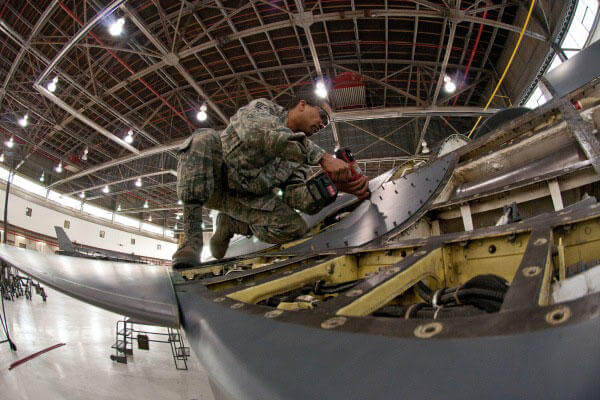Joining two of the latest weapons systems coming into the Air Force's fleet -- the KC-46 refueler and the F-35 Joint Strike Fighter -- is great, says the head of the Air National Guard, but much of the Guard's role is still tied to legacy aircraft that are decades old.
"We're very proud that we're part of the KC-46 program and the Joint Strike Fighter program," Lt. Gen. Stanley E. Clarke III said on Monday at the 2014 Air & Space Conference at National Harbor, Maryland. "The problem is ... we can't recapitalize [our primary aircraft] fast enough in order to ensure we have the equipment to operate, in performing the warfighter mission or the homeland operation."
Many airmen are flying aircraft more than 50 years old, he said, pointing to a photo of a 1961 KC-135 aerial refueler.
"We're asking airmen to fly these 1961 tankers -- and older, in fact we have one that's a 1957 model -- across thousands of miles of open ocean, at night, sometimes in adverse weather. And they do a good job of it, but it would be much nicer if we could recapitalize a bit faster so they didn't have to fly planes that are much older than the airmen themselves."
Maintaining the Guard's aircraft was highlighted Aug. 27 when an F-15 crashed in Virginia during a flight to New Orleans where it was scheduled to receive a radar upgrade to extend its life cycle. The F-15 was assigned to the 104th Fighter Wing with the Massachusetts National Guard.
Lt. Col. Morris "Moose" Fontenot, Jr., the pilot killed in the crash was the inspector general for the 104th Fighter Wing and an instructor pilot with 2,300 flight hours. The cause of the crash is still being investigated.
The Guard provides nearly half of the active-duty Air Force's tactical airlift support, aeromedical evacuations, combat communications and aerial refueling, according to the Pentagon, which acknowledges the challenges facing the reserve component's aging fleet and sustainment costs.
The Guard has identified $8.26 billion in aircraft and support equipment modernization and recapitalization needs, according to the 2015 Air National Guard and Reserve Equipment Report. Among the needs is new advanced C-130H avionics to replace technology dating back 30 to 40 years, which Defense officials say will bar the planes from flying in U.S. airspace eventually.
A critical part of Guard -- and also the Air Force Reserve -- funding has been the National Guard and Reserve Equipment Appropriation. This is money not included in the President's budget, but included by Congress to help maintain and sustain the Guard and Reserve.
After receiving $460 million in Reserve Equipment Appropriation in 2013, the figure was lowered to $315 million for 2014.
During a recent visit to the 126th Air Refueling Wing at Scott Air Force Base, Illinois, Clarke was impressed to find the wing's hangars empty. The wing flies KC-135 Stratotankers, some of which date to the ‘50s.
"All eight of [the] refuelers were out on line, flying," he said, "That's Eisenhower-era tankers."
That the Guard's fleet does remain ready for missions overseas and at home, he said, is a credit to the Air Force for putting "money behind the weapons systems sustainment programs to make sure that happens.
"But you also give a lot of credit to a bunch of experienced airmen who make sure those airplanes can fly," he said.
-- Bryant Jordan can be reached at bryant.jordan@monster.com.


























